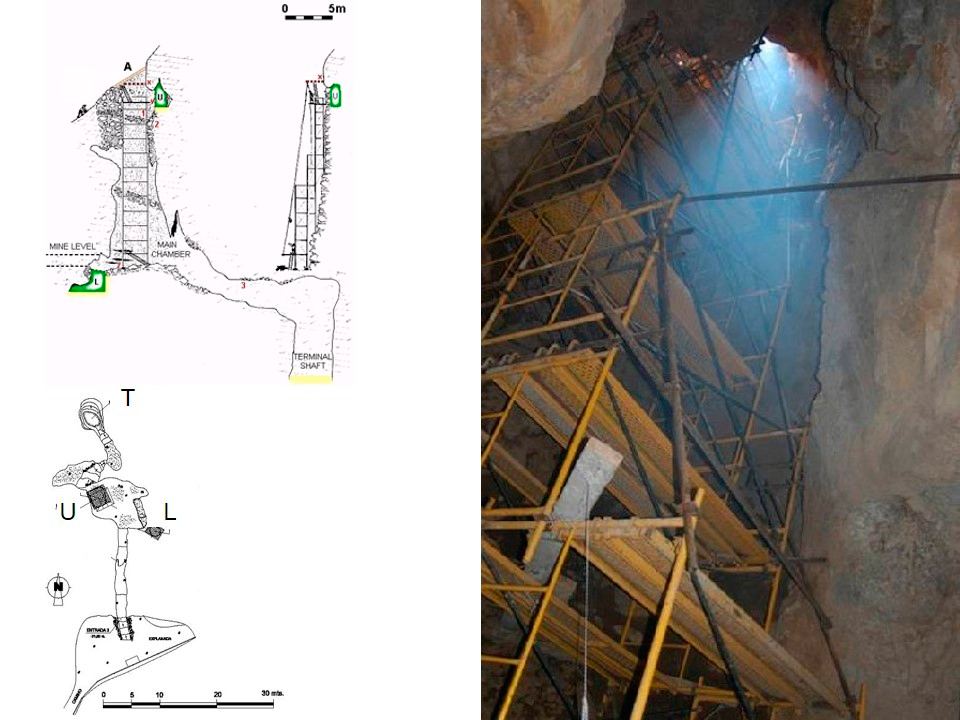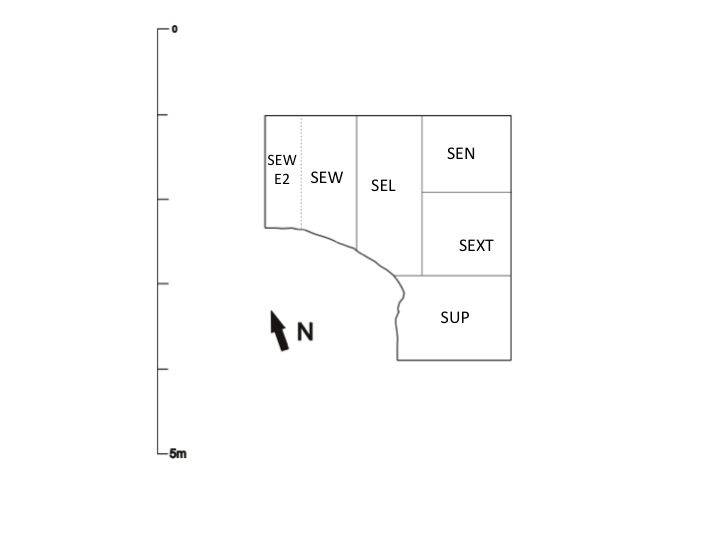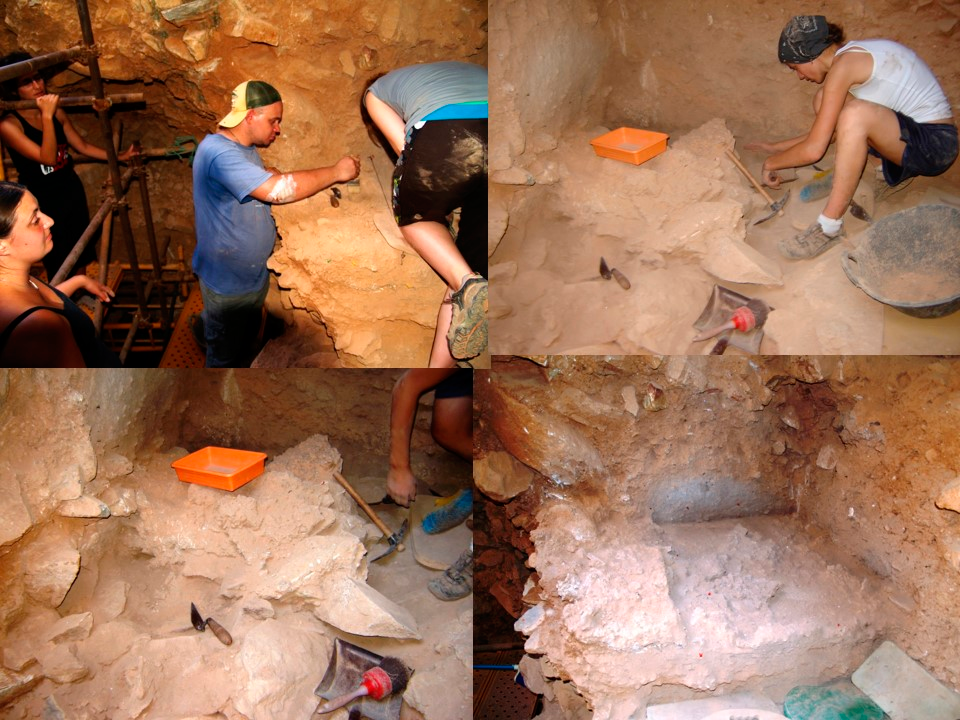The story of our field research at Sima de las Palomas
How we began at Sima de las Palomas
In 1991 we were shown a fossil by a group of young enthusiasts for nature conservation, one of whom had abseiled into the natural karst main shaft and when still only a few metres below the mouth he noticed a fossil in sediment at one side of the shaft. On cleaning, it turned out to be the upper and lower jaws of a Neanderthal’s facial skeleton, cemented together in a conglomerate block, albeit squashed from side to side doubtless owing to sedimentary pressure. It is so very uncommon to find bones of Neanderthals still connected together, as these were, that scientific exploration at the site was considered imperative in the hope of finding more articulated skeletal remains. After several years of fieldwork that hope has been fulfilled far in excess of our wildest expectations.
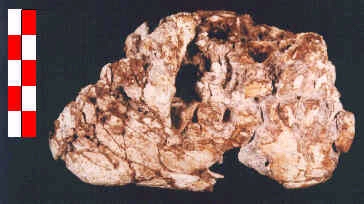
The 1991 fossil before cleaning, seen from the right, with maxilla and mandible cemented together
First, however, many hurdles had to be overcome. Mining had affected the cave system at the end of the nineteenth century and seems to have been responsible for the disappearance of most of the Pleistocene sediments that once filled the natural karst shaft although part of these remain and form a column of conglomerated sediment containing bones and stones (called “breccia”) in which the 1991 fossil had been found. This column formed a wall from top to bottom of the 18-m deep shaft.
The column was largely separated by a 3 m-wide yawning gap from the lip on the hillside that formed the outer rim of the mouth of the deep shaft, from which we gazed across to the sediment that, alas, was accessible only by abseiling down the cliff in front of us which overhang the sediment. Many rock doves nested in the sediment in 1991 so we named the shaft Dove Hole, Sima de las Palomas. Since we have been working there the birds have abandonned the cave to us.
To excavate the sediment it was necessary to erect a scaffolding tower inside the shaft. The tower was built in 1994 after we had spent two field seasons removing a sieving tons of mine rubble that had filled a tunnel which, a hundred years earlier, miners using dynamite had driven through the marble rock of the hillside to reach the base of the main shaft which also contained a mountain of their loose rubble which had to be cleared before the scaffolding could be erected. More loose rubble lay outside on the hillside, hanging dangerously above the tunnel entrance, so that too had to be removed.
All the rubble had to be sieved in order to recover Palaeolithic artifacts and Pleistocene human and animal fossils that the mining activity had disturbed, because all finds are valuable even when no longer in a stratigraphical context. We found so many Neanderthal bones that the regional authorities fitted security gates and made available scaffolding materials. We also got a grant of money, and we paid a professional rigger to organize building the tower and we helped him do so in a searing July temperature of 45ºC.
Very likely the miners were intent on drawing water up from a natural shaft lower down inside cave system, though today it is dry. Water was a scarce but vital resource needed to wash the iron ore from the 17 mine concessions on the hillside around 1900. We can only infer that this led the miners to turn their attention to Sima de las Palomas because they left no written records, and there was only a very small superficial vein of iron ore beside the mouth of the lesser of the two upper entrances, in which they left many traces of their handiwork.
Clearing and sieving rubble on the hillside around the mine-tunnel
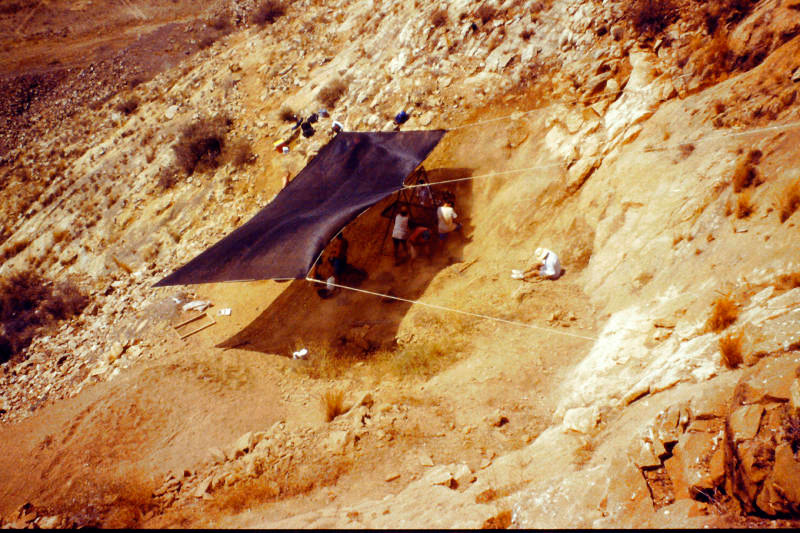
With the tower builtin 1994 we began excavating sediment beneath the overhang at the top of the natural karst shaft
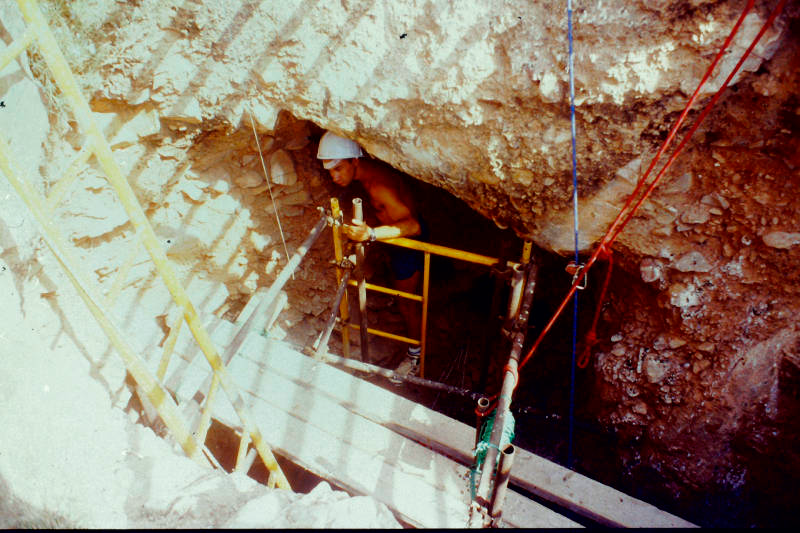
How the excavation at Sima de las Palomas developed
Our excavation began at the top of the sediment where it reached the overhanging rock and dropped vertically to the floor of the main shaft 18 m below. We began in a niche that had suffered from recent erosion in order to inspect the lay of the sediment in a place where least damage might occur were it to have been steeply inclined. Fortunately, we found that it lay almost horizontally. It gave us several Neanderthal teeth and bone fragments as well as Mousterian Middle Palaeolithic flint artifacts. Unfortunately, our precaution meant that the place we had chosen was 2 m horizontally away from where the 1991 fossil had been found. Because of the presence of the gaping hole of the shaft we had to plan our excavation strategy so as eventually to end up with an excavation area in a shape of an inverted L around the hole, which would involve several field seasons of hard work before reaching the 1991 find-spot. It was a slow task. We had to advance first in one direction, and then in another at a right-angle to it. The excavated area is now ┐-shaped.
The letters on the plan of the area are unimportant; they refer to successive extensions and expansions as the advance proceeded. These responded both to the general strategy and also to features we encountered and discoveries. For instance, we found that the horizontally-bedded sediment initially found by us had built up around a steep cemented scree (conglomerate A) of stones spreading downwards and inwards from the entrance.
It contained astonishing Neanderthal skeletal remains in anatomical connection, and we had to extend the excavation area in order to recover complete skeletons. Probably the 1991 fossil belonged to one of them as it came from a location near the western extremity of our excavation area, which might have corresponded to the head of an adult whose articulated foot bones feet lay towards the E; when we found them in 2003 it was the first sign that we had been right to anticipate finding bones in anatomical connection. Another adult skeleton, complete with skull and attached mandible, is of a woman we call “Paloma”, and below her lay the skeleton of a child (hers?) with skull and attached mandible. “Paloma” and the child lay with their hands against their faces, as if sleeping, but were probably laid out intentionally in that position. Calcium-carbonate cementation of the human bones in the conglomerate A scree made their painstaking excavation a very delicate task of extraordinary difficulty.
Various dating methods imply that the burial took place around 50,000 years ago. They include direct uranium-series dating on bones themselves (by Dr Alistair Pike, now at Southampton University), optically-stimulated sediment luminescence (by Dr Jean-Luc Schwenninger at Oxford University), and radiocarbon determinations (by Dr Thomas Higham at Oxford University) though these underestimate the likely age. Traces of burning (upper grey sediment) were excavated both in sediment that accumulated around the base of conglomerate A, and immediately beneath the skeletal assemblage itself (lower grey sediment).
The steeply-sloping conglomerate A of cemented scree and lower grey sediment lay over a gently-sloping thin band of very hard conglomerate (as tough as reinforced concrete!). This conglomerate B nevertheless contained Palaeolithic artifacts and traces of burnt bone. It covered a depth of over two metres of looser ediment with abundant traces of burning, roasting of animals (horse was a favourite), and many Palaeolithic Mousterian implements. We are continuing downwards in this unit.
Excavating above conglomerate B
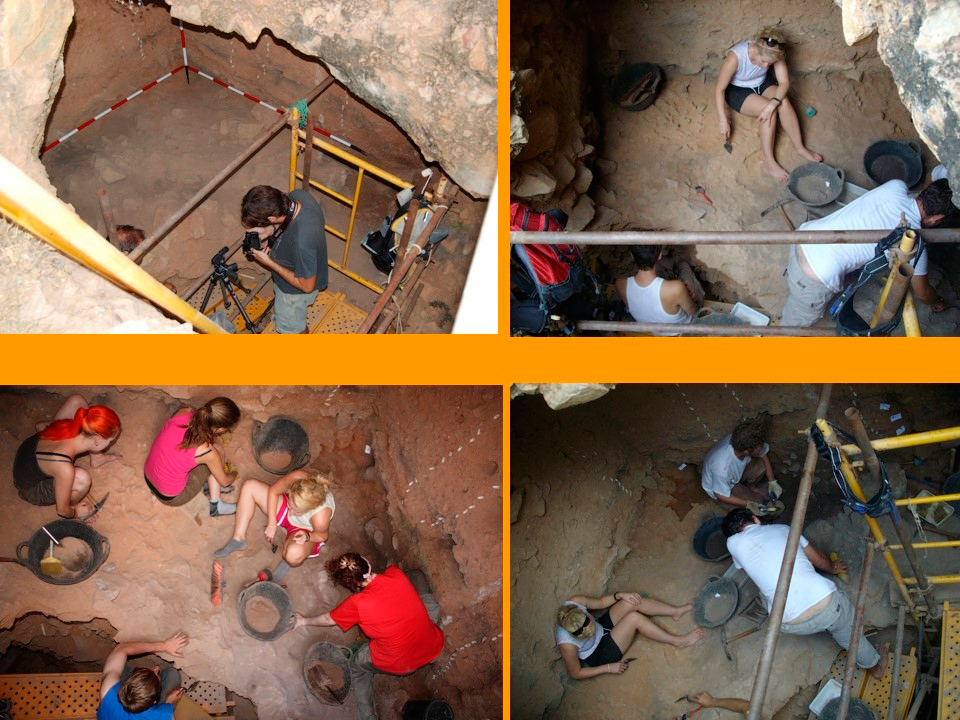
Dates determined at SIMA DE LAS PALOMAS
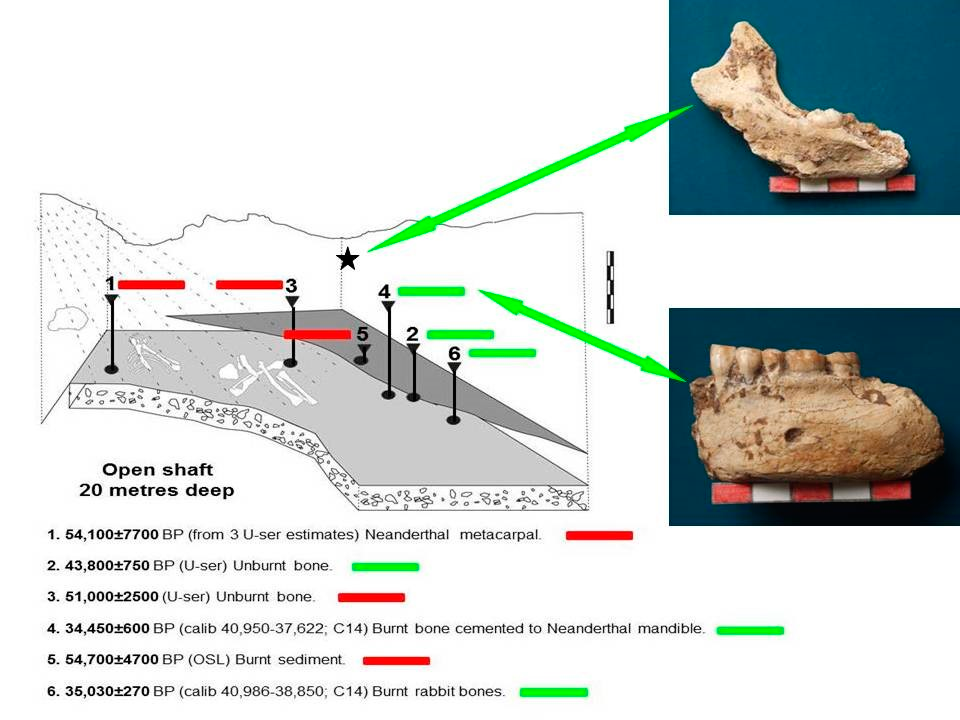
Excavating deep levels below conglomerate B in 2013

<< Formation of Sima de las Palomas How excavation at Sima de las Palomas is carried out >>

